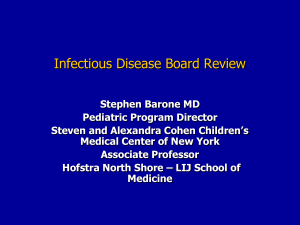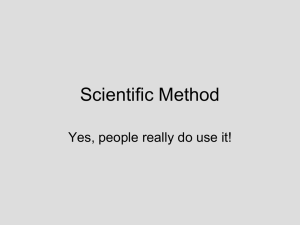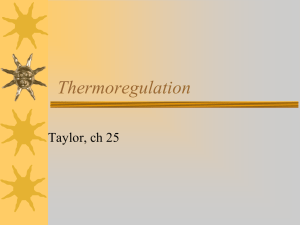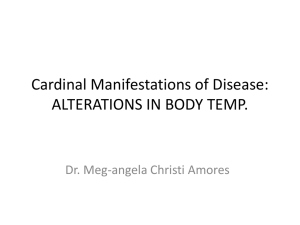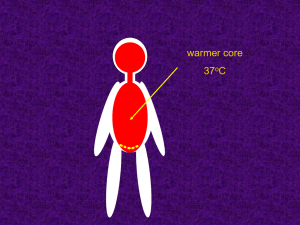Infectious Disease Board Review
advertisement
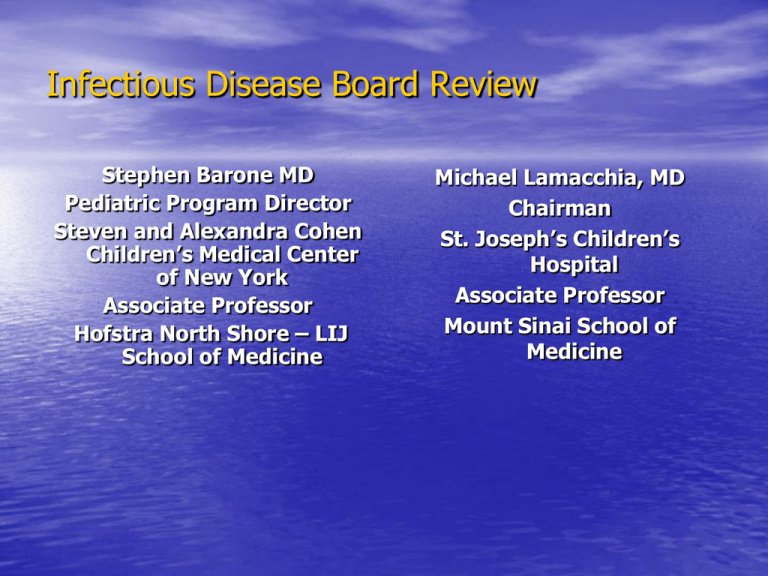
Infectious Disease Board Review Stephen Barone MD Pediatric Program Director Steven and Alexandra Cohen Children’s Medical Center of New York Associate Professor Hofstra North Shore – LIJ School of Medicine Michael Lamacchia, MD Chairman St. Joseph’s Children’s Hospital Associate Professor Mount Sinai School of Medicine Question 1 A healthy 3 year old presents with a fever to 39.8 and stridor. The child reportedly has had a 3 –day history of a “bark-like” cough, low grade fever and URI symptoms. She became acutely worse today and appears “toxic” . The most likely diagnosis is? A. Viral B. C. D. E. laryngotracheitis Epiglottis Retropharyngeal abscess Foreign body Bacterial tracheitis 10 Key Points # 1 • Bacterial tracheitis – Fever, toxic, stridor, secretions, S aureus • Epiglottis – Older, unimmunized, drooling , toxic, no cough, H. Influenza • Viral laryngotrachitis – Cough, stridor, non-toxic, parainfluenza • Retropharyngeal abscess – Young, drooling, stiff neck • Foreign body – Acute onset, afebrile, historical clues Question 2 A 2 month old infant presents with a 2 -week history of a cough, perioral cyanosis and posttussive vomiting. The treatment of choice is? A. High dose B. C. D. E. Amoxicillin Azithromycin Clindamycin Steroids Trimethroprim sulfamethoxazole 10 Key Point #2 • Pertussis – Infants or Adolescents – Macrolide - limit spread • Differential Diagnosis – Chlamydia trachomatis • Staccato cough, tachypnea afebrile, – PCP • Hypoxic, toxic , immunodeficiency Question 3 A 5 year-old presents with migratory arthritis and this rapidly changing rash. The most likely diagnosis is? A. B. C. D. E. Fifth disease Juvenile rheumatoid arthritis Rheumatic fever Systemic Lupus Lyme Disease 10 Key Points #3 • Group A Streptococcus infections – – – Exudative pharyngitis, fever, anterior nodes Treatment – Penicillin Rheumatic fever • Arthritis, chorea, carditis, nodules, erythema marginatum • Prophylaxis • Scarlet fever – no prophylaxis – PSGN • Skin infections, not preventable with antibiotics Question 4 An afebrile 12 year boy with nephrotic syndrome presents with a headache, vomiting and 6th nerve palsy. His sensorium is intact. The most likely diagnosis is? 1. Meningitis 2. Sinus venous 3. 4. 5. thrombus Brain abscess Sinusitis Lyme Disease 10 Key Points #4 • Sinus Venous Thrombosis – Symptoms • Headache • Weakness • Seizures – Predisposing conditions • Nephrotic syndrome • Thrombophilia • Meningitis • Dehydration Question 5 A child entering kindergarten has had multiple episodes of otitis media and a second episode of radiographically documented pneumonia. What is the most appropriate initial test for a possible immunodeficiency? A. Serum complement B. C. D. E. levels Serum immunoglobulin levels CD4/CD8 ratio Serum IgE levels Serial complete blood counts for 6 weeks 10 Key Points #5 • AOM and Pneumonia – Encapsulated organisms • Immunoglobulin Deficiency – X – Linked Agammaglobulinemia – Common Variable Immunodeficiency – IgA immunodeficiency • Screening Tests – Immunoglobulins – Response to vaccines Question 6 A 3 year old presents with a 1 month history of unilateral cervical adenitis. The child has been well appearing, afebrile and has had not traveled. A PPD measures 6 mm. The next step in the management is? A. Isoniazid and B. C. D. E. Rifampin for 6 months A repeat PPD in 3 months A CT of the neck Excisional biopsy Azithromycin for 4 weeks 10 Key Points #6 • Unilateral adenitis – Acute • S. aureus, Group A Streptococcus – Antibiotics – Sub acute • Atypical Mycobacterium – History, PPD, excisional biopsy • Cat Scratch – History, serology, no treatment • Kawasaki Disease – IVIG – Chronic • Malignancy Question 7 A 15 year old boy develops a fever to 101oF, headache and bilateral swelling of his parotid glands. The most likely complication of this illness is? A. Acute airway obstruction B. Sensorineural hearing loss C. Orchitis D. Myocarditis E. Arthritis 10 Key Points #7 • Parotitis – Bacterial – ill appearing – Viral • Mumps – Viral syndrome with swelling of parotid glands – Complication • Orchitis • CSF pleocytosis – most asymptomatic • Rare – myocarditis, arthritis etc. • Vaccine – Live vaccine Question 8 A 15 year old complains of a sore throat, fever and a muffled voice. On examination the adolescent is found to have trismus. The most likely diagnosis is? 1. Tetanus 2. Retropharyngeal 3. 4. 5. abscess Infectious mononucleosis Peritonsillar abscess Herpangia 10 Key Points #8 • Peritonsillar abscesses • • • • – Adolescent, sore throat, hot potato voice, trismus • Dx – exam • Organisms –S. aureus. Group A Streptococcus, Anaerobes Retropharyngeal abscess – Toddler, stridor, stiff neck, dysphagia, torticollis • Dx – CT scan Infectious Mononucleosis – Adolescent, sore throat, lymphadepathy, fatigue, fever Tetanus – Trismus and muscle spasm – C. tetani – Treatment • Tdap, TIG • Penicillin Herpangina – Peritonsillar ulcers/vesicles – Enteroviral infection Question 9 A 9 month old presents with vesicular lesions on his lips and bleeding gums. He is drooling and unable to eat. There is a “target lesion rash” In addition to hydration, Which therapeutic regime will be most effective? A. IV acyclovir B. IV nafcillin C. Topical nystatin D. Topical mupirocin E. IV steroids 10 Key Points #9 • Herpes gingivostomatitis – – – – Young child, anterior vesicles, swollen gums Treatment – supportive, Acyclovir Complication – erythema multiforme Dx – Culture, DFA • Herpangina – Posterior vesicles • Candida – Cottage cheese plaques on buccal mucosa • Impetigo – Honey crust lesions on the skin – Group A Streptococcus, S. aureus Question 10 A 3 year old presents with a three day history of fever and cough. Today he developed respiratory distress. In addition to supportive care what is the most appropriate treatment plan? A. B. C. D. E. CT Scan of chest Ceftriaxone PPD Bronchoscopy Amphotericin 10 Key Points #10 • Pneumococcal pneumonia – Most common bacterial pneumonia – Acute, fever, tachypnea, cough, focal infiltrate • Round pneumonia – Treatment • Inpatient – Ceftriaxone • Outpatient – High dose Amoxicillin • Resistance – Lack of PCP’s Question 11 A 5 year old presents with a month history of cough, fever and weigh loss. His CXR demonstrates a focal infiltrate with hilar lymphadenopathy. A PPD measures 7 mm. The most appropriate treatment plan is? A. Repeat PPD in 3 B. C. D. E. months Bronchoscopy Gastric lavage Isoniazid for nine months Isoniazid, Rifampin and Ethambutal for 6 months 10 Key Points # 11 • Mycobacterium tuberculosis – History • Immigrant, insidious, weight loss, hilar nodes – PPD • 5 mm – high risk – symptoms, HIV • 10 mm – medium – age less than 6, immigrant, travel • 15 mm – low • Diagnosis – gastric lavage – Treatment • Four drugs then based on sensitivities – Side-effects • Prophylaxis – INH – 9 months Question 12 A ten year old boy presents with a four day history of cough, fever and myalgia. A rapid influenza test was positive two days ago in his physician’s office. Today he became acutely worse and is in respiratory distress. The most appropriate therapy is? A. Oseltamivir B. Ribavirin C. Clindamycin D. Aztreonam E. Azithromycin 10 Key Points #12 • Influenza – Fever, cough, myalgia – Oseltamivir – within 48 hours – Influenza vaccine – 2A, 1B – Antigenic shift vs. antigenic drift • Complications – S. aureus pneumonia • MRSA – Clindamycin, Vancomycin Question 13 A febrile irritable 20 month old male presents with a two day history of a “crusty” excoriation under his nose This was followed by a diffuse erythematous painful rash. The most likely diagnosis is? A. Kawasaki disease B. Staphylococcal scalded skin syndrome C. Toxic shock syndrome D. Roseola E. Enteroviral infection 10 Key Points #13 1. Staphylococcal Scalded Skin Syndrome 1. Symptoms 1. Non-toxic, impetigo, painful, sunburn rash, skin peels readily. 2. Toxic Shock Syndrome 1. Hypotension 2. Fever 3. Rash 4. Desquamation 1. Plus three or more organ systems involved Question 14 A 10 year boy while on summer vacation presents to a Maryland ED with a 3 day history of shaking chills, myalgia, and abdominal pain. He is noted to have this rash on his feet and splenomegaly. The most likely diagnosis is? A. B. C. D. E. Meningococcemia HSP Rocky Mountain Spotted Fever Lyme disease EBV 10 Key Points # 14 • Rocky Mountain Spotted Fever – Epidemiology, distal petiechiae, headache, increased LFT’s, hyponatremia • Treatment – doxycycline • Lyme Disease – Northeast, Wisconsin, Northern CA • Rash, arthritis (mono), meningitis – Treatment Amoxicillin, Doxycycline Ceftriaxone Question 15 A year old child presents with a four day history of irritability and recurrent fevers. Today he is afebrile and had a diffuse erythematous rash on his trunk. You diagnosis the child with roseola. Which of the following is a common complication of this disease? A. B. C. D. E. Arthritis Febrile seizures Aseptic meningitis Thrombocytopenia Hepatitis 10 Key Points # 15 • Roseola – Fever followed by rash • HHV6 infection – Complications • Febrile seizures • Complications – – – – Parvovirus – arthritis EBV – hepatitis Aseptic meningitis – Kawasaki Thrombocytopenia - RMSF Question 16 A premature 11 month old infant receives a dose of palvizumab for prophylaxis against RSV infection. When should the next dose of MMR vaccine be administered? A. 1 month B. 3 months C. 6 months D. 9 months E. One year 10 Key Point #16 • MMR Vaccine – Live vaccine – Intervals • Palivizumab - None • PRBC – 5 months • IVIG – 11 months • Fun facts – – – – Not contraindicated with egg allergy PPD suppressed for 6 weeks If greater then 2/kg steroids – wait one month No effect of inadvertent MMR on pregnancy Question 17 Which vaccine(s) is (are) not routinely recommended for catch up vaccination for healthy children greater than 5 years of age? A. Varicella B. Hib C. Pneumococcal D. Hib & Pneumococcal E. DTaP 10 Key Point #17 • Hib and Pneumococcal vaccines – No catch up greater than 5 • DTaP – 4 doses • Varicella – Always catch -up Question 18 A fourteen year old male presents to the ED after sustaining a laceration with a lawn motor blade. He has not received any vaccinations in the past 5 years. Although his mother reports he received all recommended immunizations as a child. He should receive? A. Td and TIG B. TdaP C. DT D. TdaP and TIG E. TIG 10 Key Points # 18 No Contraindication DTaP – under 7 TdaP – Adolescents Contraindication Td – greater than 7 DT – less than 7 Vaccine Clean V/TIG Dirty V/TIG Unknown or < 3 doses Y/N Y/Y 3+ doses Y/N Y/N If > 10 yrs If > 5 yrs V = vaccine Question 19 Which of these two vaccine pairs, if not given simultaneously (at the same visit) should be separated by at four least weeks? A. Hepatitis A and B. C. D. E. Hepatitis B IPV and Pneumococcal DTaP and Hib MMR and Varicella MMR and Hepatitis B 10 Key Points #19 • Live vaccines if not given simultaneously need to be separated by 4 weeks – Learn contraindications of live vaccines • “egg based” vaccines – Influenza (injectable) – Yellow fever – Measles and mumps (chick embryo) Question 20 A 5 year old presents with fever, jaundice and vomiting. A hepatitis profile reveals: Hepatitis A IgM – negative. Hepatitis A IgG- positive. Hepatitis BsAg –negative. Hepatitis BsAb – positive. Hepatitis BcAb – negative. Interpretation? A. B. C. D. E. Acute hepatitis A and B infections Chronic hepatitis A and B infections Previous vaccination against hepatitis A and B Chronic hepatitis B infection and acute hepatitis B infection Past hepatitis B infection and acute hepatitis B infections 10 Key Points #20 • Hepatitis A IgM – Acute IgG – Acute, past, vaccine Tests Results Interpretation BsAg BcAb BsAb Negative Negative Positive Vaccine BsAg BcAb BsAb Negative Positive Positive Past infection BsAg BcAb BsAb Positive Positive Negative Acute infection BsAg BcAb BsAb Positive Positive Negative Chronic infection Question 21 A 14 year old boy returns from summer camp. He complains of a 10 day history of foul smelling watery diarrhea and abdominal pain. What is the most likely cause of his symptoms? A. Norwalk virus B. Giardia C. Campylobacter D. Yesinia E. Helicobacter 10 Key Points # 21 • Small intestine – Watery, high volume, frequent • Rotavirus. Norwalk, Adenoviurs, Giardia • Large Intestine – Blood, small volume, mucus, travel • Salmonella – food, turtles • Campylocbacter – unpasteurized milk, GBS • Yersina – “chittlings” • Shigella – food, neurotoxin • E-coli O157H7- food, HUS • E-coli – travel associated – watery • C. difficle - antibiotics Question 22 An 12 year old returns from a three month trip to India. She complains of a 10 day history of fever, chills, abdominal pain and myalgia. Her examination is unremarkable Lab results WBC – 6,000 Hb – 13.6 Plt – 400,000 AST – 120 Her most likely diagnosis is? A. Malaria B. Typhoid fever C. TB D. Hepatitis B E. Yellow fever 10 Key Points #22 • Malaria – Fever, splenomegaly, hemolytic anemia • Typhoid – Flu- like illness, normal WBC • TB – Longer incubation period • Hepatitis B – No risk factor for traveling adolescents • Yellow fever – Africa, South America Question 23 Which is the preferred diagnostic test to confirm an HIV infection in one month old infant born to an HIV positive mother? A. HIV p24 antigen assay B. HIV DNA PCR C. HIV culture D. HIV serology E. CD4/CD8 ratio 10 Key Points #23 – HIV serology can be falsely positive for up to 18 months after birth – HIV p24 antigen test – false positives and negatives • Not recommended – HIV culture – requires 4 weeks, not readily available • Not recommended – HIV DNA PCR • Highly sensitive and specific • Considered infected if two separate positive tests – CD4/CD8 ratio • Not useful in the neonatal period Question 24 A full-term normal-appearing infant was born to a 26-year old female with a history of syphilis during the first trimester of pregnancy, as evidenced by the seroconversion of her VDRL result (titer 1:4, previously nonreactive). The woman received one injection of 2.4 million units of benzathine penicillin. At delivery, her VDRL had a titer of 1:64. In evaluating this infant the appropriate conclusion is that A. B. C. D. The mother has been adequately treated, and the infant requires no further therapy The infant has a high probability of having congenital syphilis and requires evaluation and treatment If the infant’s long bone radiographs show no abnormality, no treatment is indicated This child may be given a shot of benzathine penicillin, and no further serologic evaluation is necessary 10 Key Points #24 Evaluate infants for congenital syphilis if: • Fourfold increase in maternal titer • Infant has clinical manifestations of syphilis • Syphilis is untreated, inadequately treated, or treatment not documented • Mother treated with non-penicillin regimen • Mother treated <1 month before delivery • Treated before pregnancy but with insufficient serologic follow-up Evaluation for syphilis in an infant: • Quantitative nontreponemal serologic test of serum from infant • VDRL test of CSF, cell count, protein concentration • Long-bone Xrays • CBC w/platelets • Other clinically indicated tests (C Xray, LFT’s, US, eye exam, auditory brain stem) • Pathologic examination of placenta or umbilical cord using FTA staining if possible Question 25 A 10-year-old child develops ascending paralysis with peripheral neuropathy (cranial nerves are normal); the CSF is normal except for an elevated protein level. The likely infectious agent precipitating this syndrome is - A. Corynebacterium B. C. D. E. diphtheriae Clostridium botulinum S. dysenteriae serotype 1 Campylobacter jejuni Clostridium tetani 10 Keypoints #25 Guillain-Barre Syndrome • Motor polyradiculoneuropathy • Muscle pain, symmetric, ascending paresis with minor sensory abnormality Diagnostic criteria: Required – Progressive muscle weakness of more than 1 limb Areflexia Strongly supportive – Relative symmetry Mild or no sensory Cranial nerve involvement Autonomic dysfunction Absence of fever Disease progression halts by 4 weeks Recovery Keypoint #25 - continued CSF features – Elevated protein after first week Fewer than 10 mononuclear cells Electrodiagnostic features – Nerve conduction slowing Etiology: Campylobacter jejuni CMV EBV M. pneumoniae Vaccine ie., swine flu, Menactra, rabies, tetanus toxoid, Hep. B, influenza, enteroviruses, west nile Food borne diseases (Shighella, Enteroinvasive E. coli, Yersinia enterocolitica, vibrio parahaemolyticus) Question 26 Congenital rubella syndrome is associated with which of the following? A. B. C. D. E. Patent ductus arteriosus (PDA) and branch pulmonary artery stenosis Ventricular septal defect (VSD) and PDA Atrial septal defect (ASD) and PDA VSD and ASD VSD and pulmonary artery stenosis 10 Keypoint #26 Congenital Rubella Syndrome Manifestations – • Ophthalmologic Cataracts, pigmentary retinopathy, micro phthalmos congenital glaucoma • Cardiac Patent ductus arteriosus, peripheral pulmonary artery stenosis • Auditory Sensorineural hearing impairment • Neurologic Behavioral disorders, meningoencephalitis, mental retardation • Neonatal Growth retardation, interstitial pneumonitis, radiolucent bone disease, hepatosplenomegaly, thrombacytopenis, dermal erythropoiesis Occurrence of Congenital Defects – • 85% if mother has rash in first 12 weeks • 34% 13-16 weeks • 25% during end of second trimester Question 27 A 4-year-old male is brought to your office because of a circular reddish rash under his armpit. The child has been afebrile and has had no other systemic symptoms. The rash is not pruritic. The child’s parents state that they have recently returned from a vacation in Massachusetts on Cape Cod and that a small tick had been removed from the same area where the rash is now. The only abnormality on the examination is the circular, flat, erythematous rash that is about 6 cm in diameter and is not tender. The appropriate next step in treating this patient is to - A. B. C. D. E. Order a test for serum antibodies against Borrelia burgdorferi to confirm that the child has Lyme disease Begin treatment with doxycycline Begin treatment with amoxicillin Begin treatment with ceftriaxone Perform a lumbar puncture to be certain that the child’s central nervous system (CNS) is not involved. 10 Keypoint # 27 • Clinical – Early localized • Erythema migrans – Early disseminated • Multiple erythemamigrans • Cranial nerve palsies • Lymphocytic meningitis • Arthritis • Carditis – Late Recurrent • Arthritis • CNS • Diagnosis – Clinical (EM) during early stages – Clinical and serologic in early disseminated or late – Serology EIA or IFA for screening Western Immunoblot 1 gG 5 bands 1 gM 2 bands Question 28 Primary pulmonary histoplasmosis in normal children is usually? A. B. C. D. E. Asymptomatic Associated with severe flu-like symptoms Treated with assisted ventilation and steroid therapy Associated with sarcoidlike disease Complicated by mediastinal fibrosis 10 Keypoint #28 Histoplasmosis • Causes symptoms in fewer than 5% of infected people • Site (pulmonary, extrapulmonary, disseminated) • Duration (acute, chronic) • Pattern (primary vs. reactivation) • Mississippi, Ohio, Missouri River Valley Coccidiomycosis • Asymptomatic or self-limited 60% • May resemble influenza, diffuse erythematous maculopapular rash, erythema multiforme, erythema nodosum • dissemination to skin, bones, joints, CNS is rare • California, Arizona, New Mexico, Texas, Utah, northern New Mexico, certain areas of Central and South America Blastomycosis • May be asymptomatic or acute, chronic or fulminant disease • Pulmonary and cutaneous lesions • Can disseminate to bones, CNS, abdominal viscera, kidneys • Southeastern and central states and those bordering Great Lakes Question 29 All of the following are consistent with the diagnosis of congenital toxoplasmosis in an infant EXCEPT - A. B. C. D. E. An infant with normal findings on newborn evaluation An infant who is small for gestational age A CSF protein level of 3 g/dL An infant whose mother has no serologic evidence of Toxoplasma gondii infection An infant who mother has AIDS and is chronically infected with T. gondii 10 Key Points # 29 • Congenital Toxoplasmosis – Asymptomatic at birth 70-90% – Many will go on to have visual impairment, learning disabilities, mental retardation – At birth, may have maculopapular rash, generalized lymphadenopathy, hepatomegaly, splenomegaly, jaundice, thrombocytopenia – CNS manifestations: hydrocephalus, microcephaly, chorioretinitis, seizures, deafness – Cerebral calcifications are diffuse – Members of cat family are definitive hosts Question 30 A 5-month-old previously healthy female is brought to her pediatrician because of fever, irritability, and poor feeding. She is the second child in her daycare center to be diagnosed with meningitis within a week. She has received all recommended immunizations. The most likely cause of her meningitis is - A. Haemophilus B. C. D. E. influenzae Neisseria meningitidis Group B streptococci Herpes simplex virus Listeria monocytogenes 10 Key Points # 30 • Neisseria Meningitidis – Children younger than 5, greatest attack rate in less than 1 year – Adolescents 15-18 years – Freshmen college students who live in dormitories – Close contacts of patients with meningococcal disease • Deficiency of terminal complement, properdin, or • anatomic or functional asplenia Meningococcemia, meningitis – Waterhouse-Friderichsen-purpura, DIC, shock, coma, death • Vaccine – A, C, Y, W135 – no B Question 31 Of the following drugs, the one most commonly associated with acute interstitial nephritis is - A. Sulfisoxazole B. Methicillin C. Nafcillin D. Penicillin E. Phenytoin 10 Keypoint #31 Antibiotic Complications Aminoglycosides • Amikacin, gentamicin, kanamycin, tobramycin, streptomycin • Ototoxicity and nephrotoxicity • Ototoxicity: destruction of cochlear hair cells in the organ of Corti producing a high-frequency irreversible hearing loss (amikacin, kanamycin) • Vestibular dysfunction: damage to vestibular hair cells (streptomycin, gentamicin) • Can occur early or after cessation of antibiotic Tetracyclines • Nausea and vomiting are most common • Hepatotoxicity following high doses, intravenous usage, or in pregnancy • Nephrotoxicity in pre-existing renal disease • Tetracycline-calcium orthophosphate complex that inhibits bone growth in neonates and produces teeth staining • Photosensitivity • Decreased prothrombin activity • Overgrowth of resistant bacterial organisms • Esophageal ulcers • Intravenous administration: pain, phlebitis, tissue injury if extravasation occurs Keypoint #31 - continued Antibiotic Complications Chloramphenicol • Bone marrow suppression 1. Dose, duration related and reversible (>7 days) elevated serum iron, low reticulocyte count, and low hemoglobin 2. Severe, irreversible, idiosyncratic aplastic anemia (occurs anytime during therapy or weeks after) Mechanism: thought to be direct toxicity of nitrosochloramphenicol on DNA Rifamycins • Rifampin, rifabutin • Contraindicated in pregnancy • Orange colored urine, tears and all biologic secretions in 80% of patients • Rapid and potent inducers of CYP3A4, the most abundant human cytochrome P450 found predominately in the liver and small intestine Keypoint #31 - continued Antibiotic Complications Sulfonamides • Rashes are the most common problem • Acute lgE-medicated hypersensitivity reactions and drug-induced lupus erythematosus reactions • Self-resolving granulocytopenia, megaloblastic anemia, thrombocytopenia have been described • Renal failure with crystalluria and reversible hepatocellular dysfunction with jaundice have been described with sulfamethoxazole • Aseptic meningitis Quinolones • Rare adverse reactions: arthralgia, crystalluria, acute renal failure, antibiotic associated colitis, serum sickness like reactions, eosinophilia, leukopenia, thrombocytopenia • Not approved for children <18 years of age • Interference with cartilage growth in beagle puppies • Human studies in cystic fibrosis patients and other infants have failed to show these problems Keypoint #31 - continued Antibiotic Complications Natural Penicillins • Nonfatal anaphylaxis in adults (1/1000 exposures) • Fatal anaphylaxis is rare • Other hypersensitivity reactions: serum sickness, cutaneous rashes, contact dermatitis • Allergic reactions seem to be most prominent with procaine penicillin (up to 90%) • Other reactions: hemolytic anemia, interstitial nephritis, seizures, hyperkalemia associated with high doses or prolonged exposure Cephalosporins • Anaphylaxis • Hypersensitivity reactions may be compound specific (e.g., cefaclor) • Hypersensitivity reactions include interstitial nephritis, autoimmune thrombocytopenia, pulmonary eosinophilia, serum sickness like reaction, drug fever • Seizures and nephrotoxicity associated with high doses and poor renal function • Gastrointestinal upset is most common with oral agents • Ceftriaxone: reversible biliary pseudolithiasis and rapidly fatal immune-mediated hemolytic anemia Keypoint #31 - continued Antibiotic Complications Macrolides • Generalized pruritus, maculopapular rash, serum sickness like reactions, erythema multiforme major associated with large doses or in patients with renal failure • Intravenous administration has been associated with cardiac toxicity (prolonged QT interval, ventricular tachycardia, premature ventricular contractions, nodal bradycardia, sinus arrest), hepatotoxicity, and venous venous irritation (rate associated) Question 32 A gravida 1, para 0 woman is at 38 weeks’ gestation. A vaginal culture taken 48 hours ago is now reported positive for herpes simplex, type II. Her obstetrician asks your advice concerning immediate management of delivery for obstetric reasons. You should advise A. B. C. D. E. Vaginal delivery after the spontaneous onset of labor Cesarean delivery before the onset of labor Topical treatment with tetramethyl acridine followed by phototherapy and vaginal delivery Immediate induction of labor and vaginal delivery Oral administration of acyclovir to the mother and induction of labor and vaginal delivery 10 Key Points # 32 • Neonatal Herpes Infections – Delivery by C-Section prior to rupture of membranes – Risk of HSV infection at delivery in an infant born vaginally to a mother with primary infection of 33-50% – If born to a mother with reactivated infection of less than 5% – Neonatal HSV may be – 1) disseminated 2) localized to CNS 3) localized to skin, eyes, mouth Question 33 A 5 year old child presents to the emergency department 12 hours after receiving a dog bite to his hand. The hand is swollen, red and painful. The intravenous antibiotic of choice is? A. B. C. D. E. Ceftriaxone Doxycycline Clindamycin Ampicillin – Sulbactam Erythromycin 10 Key Points # 33 • Animal Bites – Pasteurella multicida – rapid < 24h hours – Staphylococcus aureus – Mixed Infections • P. multicida – Drug of choice - penicillin – Resistant to many cephlosporins Question 34 An 17 year old sexually active female presents to the ED complaining of malodorous, frothy vaginal discharge. A wet mount is as shown. The drug of choice is? A. B. C. D. E. Ceftriaxone Clindamycin Metronidazole Fluconazole Azthromycin 10 Key Points # 34 • Trichomonas Vaginalis – Asymptomatic in 90% of men and 50% of women – Frothy vaginal discharge and mild vulvovaginal itching and burning, pale-yellow to green-gray DC, musty odor – Deeply erythematous vaginal mucousa, friable cervix – Wet-mount prep – Metronidazole or Tinidazole Question 35 A 15 year old girl had sexual intercourse for the first time a week ago. She has received 3 doses of the quadrivalent HPV vaccine. Which of the following statements are true? A. B. C. D. E. Secondary to “cross protection” she is protected from all strains of HPV She is fully protected against HPV related cervical cancer She has a decreased risk of developing genital warts She should receive a booster dose now. If her partner used a condom her risk for HPV is reduced by 95% 10 Key Points # 35 • Human Papilloma Virus – Condylomata Acuminata – skin colored warts with a cauliflower-like surface – HPV the cause of cervical, vulvar, vaginal cancers – HPV Vaccine • 16, 18 cervical cancer – 67% decrease • 6,11 cervical warts – 98% decrease Question 36 Abdominal pain and bloody diarrhea develop in a 2year-old boy two days after completion of therapy for otitis media. The child is febrile and has abdominal distention. An assay for C. difficile toxin in positive. The most appropriate next step in the management of this child is? A. B. C. D. E. Confirmatory stool culture for C. difficile A colonoscopy to determine the extent of the disease Initiation of oral metronidazole Initiation of oral Vancomycin Initiation of IV Vancomycin 10 Key Points # 36 • C. Difficile – Pseudomembranous colitis – diarrhea, abdominal cramps, fever, systemic toxicity, abdominal tenderness, stools with blood and mucous – At risk groups for severe or fatal disease are: leukemics with fever and neutropenia, Hirschsprung, IBD – Diagnosis • C. Difficle toxin • Infants have greater than 50% positivity – Treatment • Discontinue antibiotics • Oral metronidazole, • In severe disease, if diarrhea persists –vancomycin Question 37 A 10 day old infant presents with fever and irritability. The infant’s mother was ill with fever, malaise and abdominal pain 7 days prior to delivery. She reports her Group B strep status as negative. A lumbar puncture revealed a RBC count of 50 and a WBC count of 2,500. The most likely organism causing this child’s meningitis is? A. Group B B. C. D. E. streptococcus Escherichia coli Listeria monocytogenes Enterviral Herpes Simplex 10 Key Points # 37 • Listeria monocytogenes – Infections associated with maternal flu like illness, fever, malaise, GI symptoms – Early or late onset • Early – preterm, pneumonia, sepsis • Late - Meningitis Question 38 A nurse reports 2 week old infant born at a gestational age of 33 weeks is no longer moving his right leg. An x-ray of the child’s leg reveals a lytic lesion in his femur and tibia. The most likely etiologic agent is? A. Group B B. C. D. E. streptococcus S. aureus S. epidermidis Pseudomonas aeruginosa Kingella kingae 10 Key Points # 38 • Neonatal Osteomylitis – Most likely – Group B streptococcus • Multifocal • Pseudo-paralysis • Afebrile Question 39 An adolescent patient with ALL is being treated for prolonged fever and neutropenia. On a routine set of electrolytes it is noted that her serum potassium is 2.0. Which of the following drugs is most likely the cause of this patient’s hypokalemia? A. B. C. D. E. Vancomycin Amphotericin Cefepine Acyclovir Gentamicin 10 Key Points # 39 • Complications of Amphotericin – Systemic • Fever, Chills – Renal • Azotemia • Hypokalemia – Essentially any other system as some potential side - effects Question 40 A 6 month old is admitted to the hospital for elective tonsillectomy . During your history and physical examination the mother reports he was expose to varicella at day care 48 hours ago. At this time you should? A. B. C. D. E. Place the baby on respiratory isolation Place the baby on respiratory isolation and administer VZIG Place the baby on respiratory isolation and administer both the varicella vaccine and VZIG Administer VZIG only and reschedule the surgery No special precautions 10 Key Points # 40 • Varicella – Incubation 7 to 21 days • Indications for VZIG – Immunocompromised – Newborn- mothers onset 5 days before to 2 days afterward – Preterm infant < 28 weeks • Exposure – Household – Face to face play – Hospital – same room, face to face contact Answers • • • • • • • • • • • • • • • • • • • • 1-e 2-b 3-c 4-b 5-b 6-d 7-c 8-d 9-a 10 - b 11 - e 12 - c 13 - b 14 - c 15 - b 16 - a 17 - d 18 - b 19 - d 20 - c • • • • • • • • • • • • • • • • • • • • 21 22 23 24 25 26 27 28 29 30 31 32 33 34 35 36 37 38 39 40 - b b b b d a c a d b b b d c c c c a b e

